Photographs: Danish Siddiqui/Reuters Vanita Kohli-Khandekar in New Delhi
Going by the Telecom Regulatory Authority of India data, more than 56 per cent of the 83 million Internet users in India are now on broadband.
That means they access their Net through a fat pipe capable of delivering 256 kpbs or more of data against half that capacity earlier.
That, in turn, means more than 46 million people can see films and music videos, shop, and do a thousand other things online, up from 28 million in January 2009.
This number is growing year-on-year at about 30-40 per cent rate as private telecom operators offer broadband connections at great prices.
. . .
Why we should take the Internet seriously
Image: Designers work at the Renault India studio in MumbaiPhotographs: Punit Paranjpe/Reuters
For long, the Internet story in India has been one of poor penetration.
According to Hansa Research (which does the IRS), there were 330 million newspaper readers and 482 million television viewers in India in 2009.
So, even at a total of 83 million, the Internet compares poorly with most mass media. More importantly, its progress has been tardy.
Consider that in 18 years, private television penetration went up from 34.9 million in 1992 to 134 million households in 2009.
In 15 years, Internet penetration has gone to just 16.72 million subscribers (to arrive at users, multiply by five).
. . .
Why we should take the Internet seriously
Image: Designers work at the Renault India studio in Mumbai.Photographs: Punit Paranjpe/Reuters
That explains why companies in the domain have found it difficult to cross even the Rs 100-crore (Rs 1-billion) mark.
Among the largest players are The Times Group, which had an estimated Rs 250 crore (Rs 2.5 billion) in revenues from the Internet in the financial year ending June 2008, and Info Edge at Rs 233 crore (Rs 2.33 billion) in the financial year ending 2010.
The total Internet ad pie in India is estimated to be about Rs 1,200 crore (Rs 12 billion) in 2009.
This includes search and classified among other forms of Net advertising.
. . .
Why we should take the Internet seriously
Image: A hawker checks a monitor while selling computers and television sets on a pavement in Kolkata.Photographs: Parth Sanyal/Reuters
Scale, a la the US where Net advertising hit $23 billion (Rs 100,000-odd crore) last year, will come only with higher penetration.
In most countries, when broadband hits 20 per cent of population or more is when the action begins.
That means we need to have at least 200 million users on broadband connections before anyone can take the Net seriously. At 46-odd million, we are way behind.
Nevertheless, it is significant simply because the markets it will impact -- the metros -- could set the tone for the others.
So, what does it mean?
. . .
Why we should take the Internet seriously
Image: Brokers trade on their computer terminals at a stock brokerage firm in Mumbai.Photographs: Punit Paranjpe/Reuters
At a cursory level, it means more competition among the media that advertisers use to reach consumers -- print, TV, radio and the Internet -- for both audiences and revenues.
It will also mean acceleration of a trend that most English language newspapers in metro India have been experiencing, of declining youth readership.
The biggest impact, however, should be on the valuations of companies that have been building business-to-consumer, or BtoC, businesses.
Finally, the scale that the India market is famous for will start coming into play at least on audience numbers.
. . .
Why we should take the Internet seriously
Image: A man speaks on a mobile in front of a billboard on the opening day of 'COM-IT 2008' in Mumbai.Photographs: Arko Datta/Reuters
Whether this will have a revenue impact is hard to say.
It depends on what is on offer online, how it affects time spent and whether advertisers pay the same kind of money to reach a viewer or a reader online that they pay in print or TV.
In mature Internet markets such as the US or the UK, the cost per thousand, or CPMs, on the Internet is a fraction of that for print or TV brands.
That is because the impact of any content -- films, television shows or newspaper articles -- on the Web is considered weaker compared to, say, the same on TV or in print.
. . .
Why we should take the Internet seriously
The big Internet successes on both revenues and audiences remain aggregators or search engines, such as Google, which depend on free content.
On the other hand, content companies have been pathetic at making money on the Net.
For example, even though the top 16 news sites in the US belong to old media companies, it is their shrinking print or TV operations that fund these sites.
Therefore, much of popular online media and its growth is subsidised by old media.
So far there hasn't emerged a profitable business model for professionally generated content online, in spite of its obvious popularity.
Maybe by the time we hit 200 million, there would be one that makes sense and returns, both.

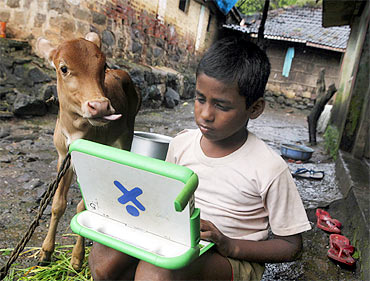

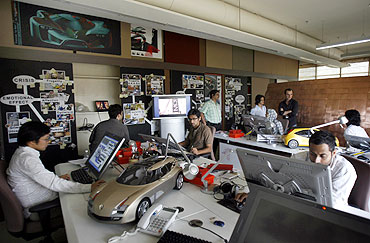
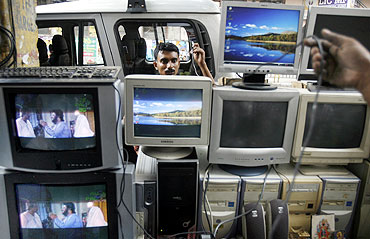
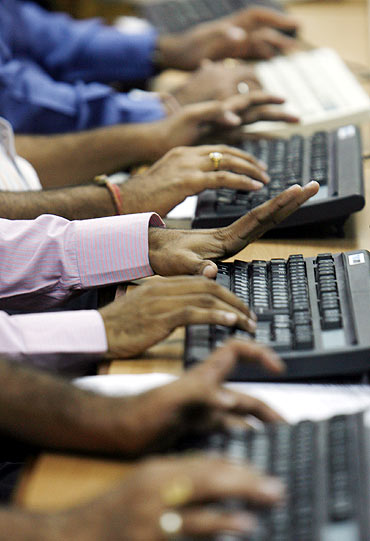
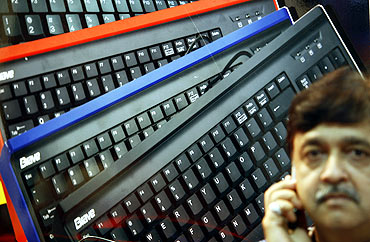
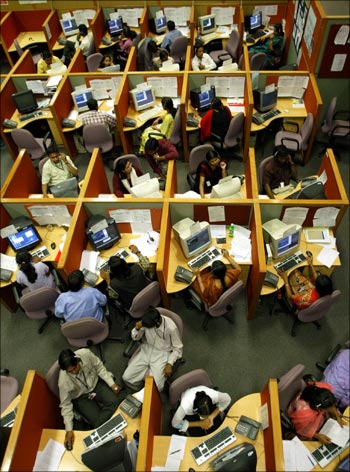

article